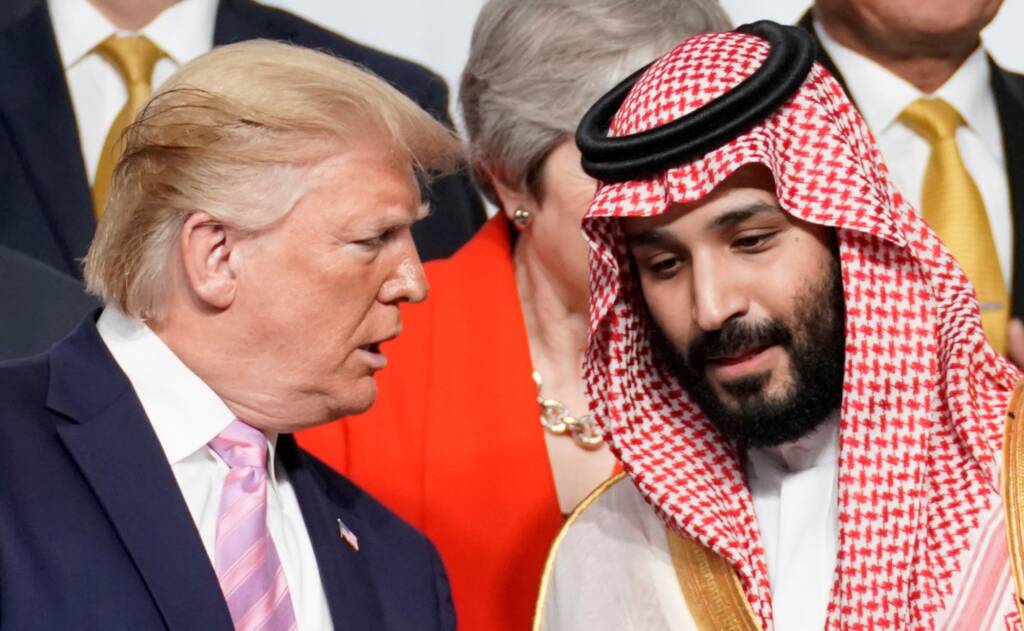In a meeting abruptly rescheduled early, the Saudi Arabia-led Organization of Petroleum Exporting Countries (OPEC) announced that it would boost its production quota. The move marks the third straight monthly increase, placing the global oil industry on a price-war footing.
In response to the news, U.S. crude oil futures fell about 2% on Monday to close at the lowest in four years, after OPEC+ agreed to hike production for a second month.
U.S. crude lost $1.16, or 2%, to close at $57.13 a barrel, the lowest settlement since February 2021. Global benchmark Brent crude fell $1.06, or 1.7%, to settle at $60.23 per barrel. Oil prices have fallen about 20% this year.
The eight producers in the group, led by Saudi Arabia, agreed on Saturday to increase output by another 411,000 barrels per day in June. The decision comes one month after OPEC+ surprised the market by agreeing to boost production in May by the same amount.
The June production increase is nearly triple the 140,000 bpd that Goldman Sachs had originally forecast. The moves mean that OPEC+ is bringing more than 800,000 bpd of additional supply to the market over the course of two months.
The Saudi-led OPEC meeting was originally scheduled for Monday, but moved ahead with “less than a day’s notice” to Saturday, according to Bloomberg.
Reasons for the Increase by OPEC
Apparently part of the motive behind the unexpected increase was to lean on Iraq and Kazakhstan. Both countries have reportedly been producing above their agreed-to production caps, giving them a larger than agreed-to portion of the market’s revenue.
But there is said to be another factor involved in this decision as there are speculations that the move is a way to challenge the US oil capabilities. The U.S. set a record for monthly oil production of 13.45 million barrels per day in October. It has since hovered just below that level, and U.S. producers have begun to discuss the likelihood of a peak in Texas’ Permian Basin, the premier production region of the U.S.
Russia amplified the Saudi message, with Deputy Prime Minister Alexander Novak expressing unity in the OPEC+ strategy.
“Russia, Saudi Arabia, the United Arab Emirates and Kuwait could all produce much more today …” according to a Bloomberg report of a Russian State TV broadcast from the meeting. “But we are holding back production.”
In addition, an oil price war typically leads to an increase in global oil market share for Saudi Arabia, arguably the world’s lowest cost producer of oil.
President Donald Trump opened a significant market share opportunity on Thursday, just before OPEC rescheduled its meeting.
A social media post from the president said that all purchases of oil from Iran must stop immediately. “Any country or person who buys any amount of oil or petrochemicals from Iran will be subject to” immediate, secondary sanctions, the post said.
The move, an effort to create added leverage in ongoing U.S.-Iranian negotiations, added to Trump administration sanctions imposed in February and tightened in early April. It is also seen as a direct increase in leverage against China, which is the predominant buyer of Iranian oil.
Trump’s visit to Saudi
Another potential layer of calculation is that, looking longer term, Saudi oil producers are trying to put higher-cost US producers out of business to secure greater market share. This tracks with past experience as well as the ongoing struggles of the US oil industry in the present context, where the industry is broadly down 11% post-‘Liberation Day,’ with new lows now possible in the wake of this OPEC+ announcement.
Globally, higher-cost oil producing states also stand to lose, particularly those which are already experiencing fiscal strain. Some notable ones include Nigeria, Iraq, Iran, and Venezuela. The Russian economy is also vulnerable here, having just tripled its deficit forecast after adjusting its 2025 per-barrel oil cost from $70 to $56.
The suddenness of the announcement also underscores the fact that the White House’s focus will be squarely on the Middle East in the coming weeks. Defense Secretary Pete Hegseth plans to visit Israel beginning May 12. While Donald Trump is expected to arrive in Saudi Arabia, marking his first official trip abroad as the 47th President of the USA.
News of advanced weapons sales is already coming out, with more expected once the visit is underway, along with a possible civil nuclear agreement. With both Trump and the Saudis looking to have their own way in this oil war, it will be interesting to see what kind of terms they are both able to come to post the US President’s visit.
